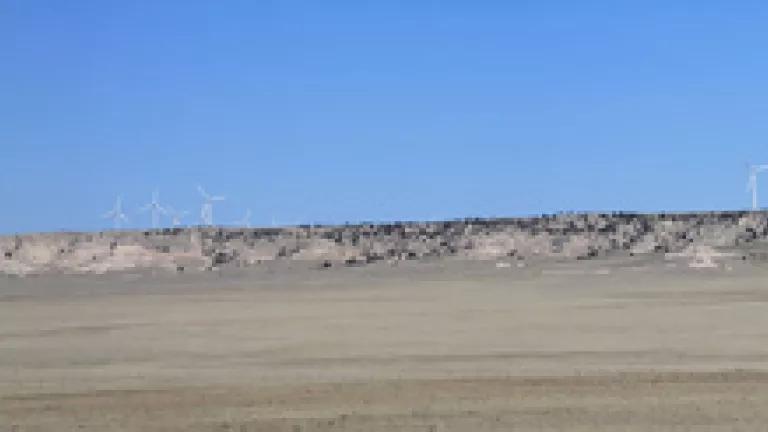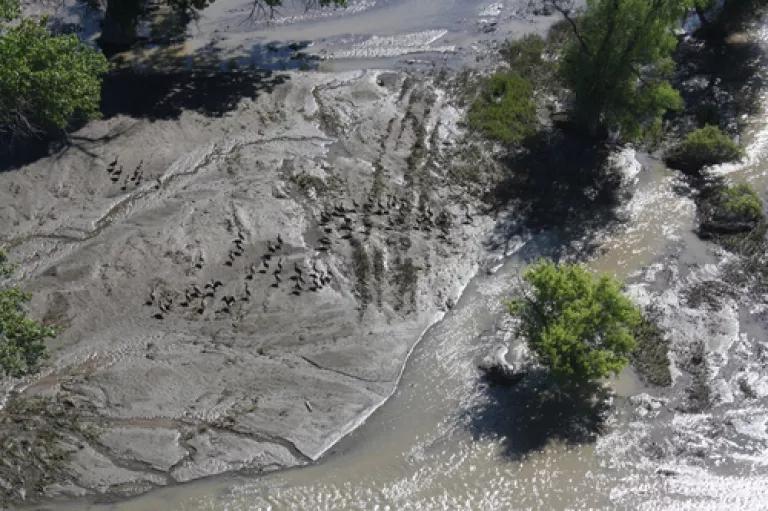Western Energy News Round-Up: Wind Record Topped, Cost-Effective Storage, and Coal's Declining Market Share

Western Energy News Round-Up is a periodic selection of news highlighting recent energy and environmental issues in the western United States.
October 31 – November 5, 2013
Renewable Energy:
Xcel Colorado sets U.S. record with over 60% wind
Xcel Energy's Colorado system has topped its old hourly penetration record for wind (56.7%), reaching 60.5% between 1 and 2 a.m. local time on that date. The company has announced that it will also expand its already large use of wind power by 30 percent with recently announced purchase agreements and direct ownership--including yet another wind farm in Colorado.
(AWEA Blog, November 1, 2013)
Wind farm in Keota, Colorado (Photo by William Andrus under Creative Commons licensing.)
California Throws Down Challenge to Energy Storage Entrepreneurs: Bring Us Cost-Effective Options
The California Public Utilities Commission ("CPUC") has created a 1325-MW market for energy storage in California. The decision requires California's regulated utilities purchase storage only if cost-effective options are available.
(Energy Natural Resource Law, November 1, 2013)
Energy Capital Group moves forward with 300 MW PV project in Utah
Utah-based investment firm Energy Capital Group LLC filed paperwork this week for a conditional-use permit to build its proposed 300 MW Utah Solar 1 PV power plant in Delta, Utah.
(PHOTON, November 1, 2013)
Solar Rebound Beating Dot-Com Recovery as Demand Surges
Solar industry manufacturers are rebounding from a two-year slump faster than technology companies recovered from the dot-com bubble of the late 1990s. Installations at power plants and on roofs will swell 40 percent this year from a 6.1 percent pace last year as prices stabilize.
(Bloomberg, October 31, 2013)
Fossil Fuels:

Resident Canada geese inhabit impacted portion of Yellowstone River on July 9, 2011. (Photo by USFWS Mountain Prairie under Creative Commons licensing.)
Montana, feds to seek damages from Exxon Mobil spill
After two years of review, Montana and federal officials notified Exxon Mobil Corp. that they intend to seek damages for injuries to birds, fish and other natural resources from a major crude oil spill into the Yellowstone River. The company also is being asked to pay for long-term environmental studies and for lost opportunities for fishing and recreation during and since the cleanup.
(Fuel Fix, October 31, 2013)
Utah's coal production among states in significant decline
A new analysis shows that Utah is among the top coal-producing states experiencing drastic production declines from its apparent peak year. "The rising cost of production is the sleeper issue for those who follow coal and energy markets in the United States," said Tom Sanzillo, director of finance with the Institute for Energy Economics and Financial Analysis. "It is a geological certainty and an economic fact that as mining activity matures in a region, production typically becomes more difficult and more expensive.
(Deseret News, October 30, 2013)
Understanding the shift from coal-generated electricity
Market forces, not EPA regulation, are the cause of Montana coal's declining market share. When natural gas prices fell to low levels, coal did not stand a chance in the competition. Very few new coal-fired plants were built; even fewer are planned; and the older, less efficient coal-fired plants are being retired because they are too costly to operate.
(Missoulian, October 31, 2013)
Conservation & Climate Change:
Climate change to affect Pacific Northwest forests, water supply and coasts -- report
Climate change in the Pacific Northwest will alter water availability and storage, threaten coastal areas, and increase forest fire and pest outbreaks, according to the newly released Northwest Climate Assessment Report. The coastal impacts of climate change are considered to be among the costliest, because climate change brings a combination of impacts to coasts: rising sea levels, acidification and extreme weather, as coastal areas increase in population.
(E&E News, November 5, 2013)
BLM to propose sage grouse protections on millions of acres in 5 states
The Bureau of Land Management is set to release proposed management plans for greater sage grouse covering millions of acres of federal land in five Western states that are home to the imperiled bird. The draft plans would designate priority and general habitat areas for sage grouse with concurrent land management prescriptions for each habitat type.
(E&E News, October 31, 2013)
Compiled by Meredith Connolly
